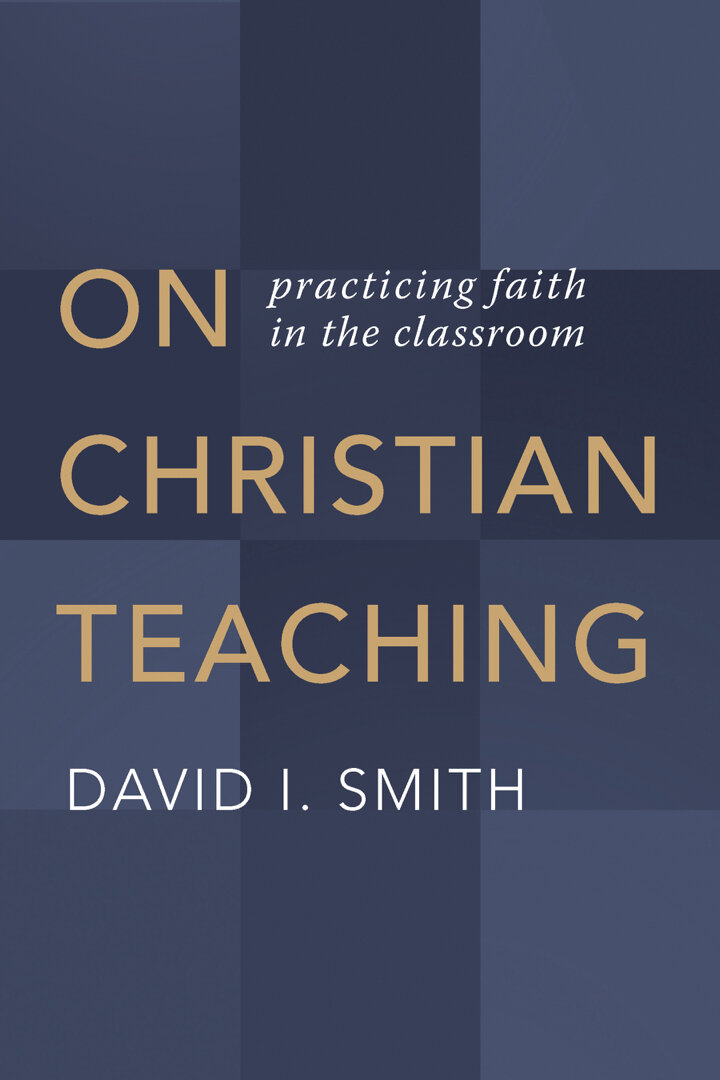By David I. Smith
What does it means to "teach Christianly"?
Calvin University professor of education, David I. Smith, shifts "faith and learning" from content to pedagogy in On Christian Teaching: Practicing Faith in the Classroom. I am glad he did. My perspective needed this whack on the side of the head.
Smith contends the institutional history of Christian higher education has been mapped, contested, and refined. Similarly, "faith and learning" has garnered significant attention. Pedagogy, not so much! This dearth of attention "tends to leave the individual Christian teacher largely to his or her own devices when it comes to making explicit what it might mean to teach in a manner informed by faith." (145). Smith notes:
This, I believe, is Christian teaching and learning, not in the narrow sense of teaching and learning that focuses on inculcating theology, but in the form of a complex of practices shaped by and articulated in terms of Christian identity. (77)
Get ready, when it comes to "teaching Christianly, Smith is not going to advocate inserting a verse here and there the way some drop emoticons in text messages. Rather, the author proposes the What If Learning model, which is based on three concepts: (1) Seeing anew, (2) Choosing engagement, and (3) Reshaping practice. These are not "separable steps but ... simultaneous facets of teaching, each dependent on the others." (79)
Here's the BIG QUESTION:
What happens if we shift the focus and ask not just what Christian ideas are taught, but what might be Christian about the teaching and learning practices among which we invite students to live? (4)
I appreciate Smith's efforts to shift the discussion not necessarily away from "faith and learning," but towards the pedagogical integration of faith and learning via the classroom.
On Christian Teaching explores four key claims:
1. We need to have a conversation about faith and pedagogy that goes beyond worldview, Christian character, and basic classroom practices such as prayer and devotions.
2. This conversation needs to be conversational not formulaic because there is no prescribed formula for teaching Christianly.
3. We need this conversation to enhance the development of Christian education at all levels.
4. The conversation regarding the pedagogical integration of faith and learning is sorely missing in the research.
Smith examines his key key claims in eleven chapters. The first half of his book he explores claims one and two. Claim three is addressed throughout his work. Claim four in the final chapter. The second half of the book he devotes to unpacking a framework to help the reader think practically about faith and pedagogy.
Smith makes many great points, among them the challenge facing higher ed in general and Biblical/Christian higher education in particular, namely, how to posit a Christian university. Yes, we need to to think through identity (what exactly is a Christian university), pluralism (how to relate to religious diversity); content (how our ideology differentiates us), but also pedagogy. As he notes, "Talk of Christian education will always fall short if attention is not focused on pedagogical questions" (139). While this should be a differentiator in Biblical higher education, is it? In other words, does the more recent focus on the "integration of faith and learning" consider "how faith shapes the learning process?" (140)
The author will make it very hard for you to simply read his pages. Each chapter concludes with "For Reflection and Discussion" and a journal exercise. Additionally, he is a master of metaphor and "real life" examples, making the book all the more enjoyable to read.
My takeaways:
1. The BIG QUESTION: "In what ways does the teaching and learning process, rather than the perspectives conveyed by course content, require our attention?" (3) Chapel programs are great. Prayer in class is great. But what does it mean to teach Christianly -- the atmosphere, the community, the learning practices? This book is about how we cook, not about whether we should all eat spaghetti. (25)
2. Patterns that matter: "More than one thing is happening when we teach and it all happens at once, and although we have focal learning goals, faith frames our approach."(27). To that end, "Thinking of teaching as basically explaining things is like thinking of a church service as basically singing things. It misses a huge amount of what matters." (28) How does faith form all you do? Patterns of thinking matter, so does our view as to the journey of each student's soul.
3. The model: Smith asks us to see anew , to take time to imagine afresh what it means to teach: "We need to be able to reimagine who we are as teachers, who and what our students are, what their needs are, and what can happen in classrooms." (70) He asks us to choose engagement , i.e. think about how we involve students in the learning process. Finally, he urges us to Reshape Practice , maximizing our material resources and strategies, e.g. time, space, body language." These three pieces are not sequential, but simultaneous.
4. Life Together: Borrowing from Bonhoeffer, Smith highlights, among other things, that we can seek transformation through exhortation, but miss engaging in new practices that model the life we exhort.
5. Studiousness vs Curiosity: Smith works from Paul Griffiths, The Vice of Curiosity, to differentiate the Augustinian account of our different motivators for knowledge. Fascinating.
I am grateful to Dr. Julia Hershey, chair of the Education Department at Lancaster Bible College|Capital Seminary and Graduate School for putting me on this quest to work my way through On Christian Teaching: Practicing Faith In The Classroom. Having now read the book, I can see why she advocates it so strongly, as do I!

